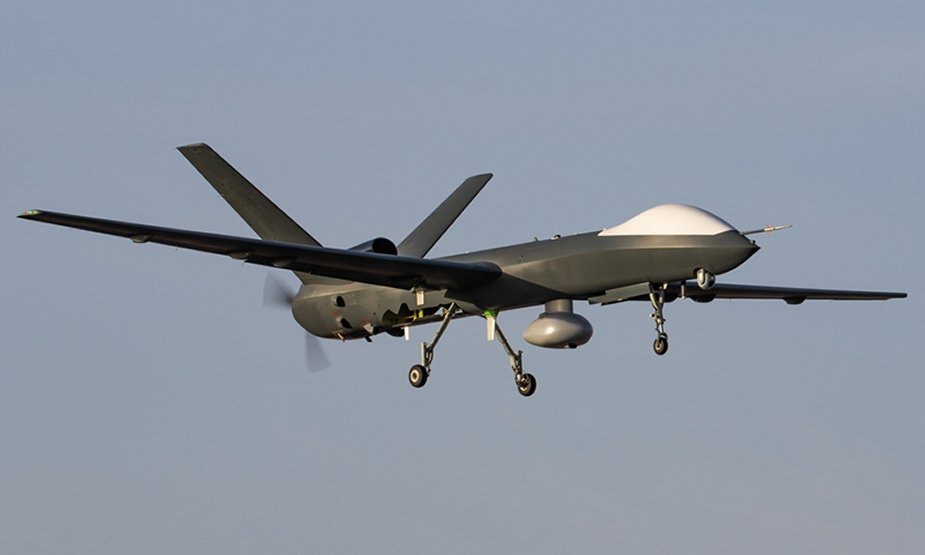Breaking news
Maritime version of Chinese CH-5 CUAV drone makes first test flight.
China recently conducted the first flight test of a maritime version of the locally developed Combat UAV (CUAV) CH-5, its developers said on Thursday, July 16. Deng Xiaoci and Liu Xuanzun report on Global Times. The new version of the CH-5 drone is a medium-to-high altitude, long-endurance large drone system that can cope with complicated and dynamic oceanic conditions.
Follow Air Recognition on Google News at this link

Maritime version of the CH-5 Rainbow CUAV (Picture source: Sun Jing)
The CH-5 is the latest UCAV of the Rainbow series, with a wingspan of 21 meters, a payload of 1,000 kg, a maximum takeoff weight of over 3 tonnes, a service ceiling of 9,000 meters, an endurance of up to 60 hours and a range of 10,000 km. Thanks to a shared data link, it can cooperate with CH-3 and CH-4 drones. It conducted its maiden flight in August 2015 and its first airshow flight (in northern Hebei province) in July 2017.
The drone can carry 16 missiles at a single time. There were also plans to extend its range up to 20,000 km. Chinese officials claimed the CH-5 Rainbow was similar in performance to the U.S. MQ-9 Reaper and "may come in at less than half the price". Compared to the Garrett TPE331 turboprop engine mounted on the Reaper, CH-5 is equipped with an unidentified turbo-charged piston engine, with less than half the horsepower. This choice limits the maximum altitude of the CH-5 to 9 km compared to the 12–15 km of the Reaper, but it also extends CH-5's endurance to 60 hours compared to 14 hours of the Reaper's. Future blocks of CH-5 will be able to stay in the air for up to 120 hours. The standard CH-5 can conduct short takeoff and landing in plateau regions and is easy to use, reliable and cost-effective, the company said, noting that it can be customized with additional equipment, including fire control radar, electronic countermeasures and jamming devices.
Compared to the standard version of the CH-5, the maritime version was improved to cope with high-temperature, humid and salt fog situations at sea. For instance, connectors of parts were replaced with titanium to adapt to maritime environments, the company said. The linkage testing of the radar systems was completed in the test, said the CH-5 development team, who also said that the drone will be deployed next to genuine sea environments for further tests.


























